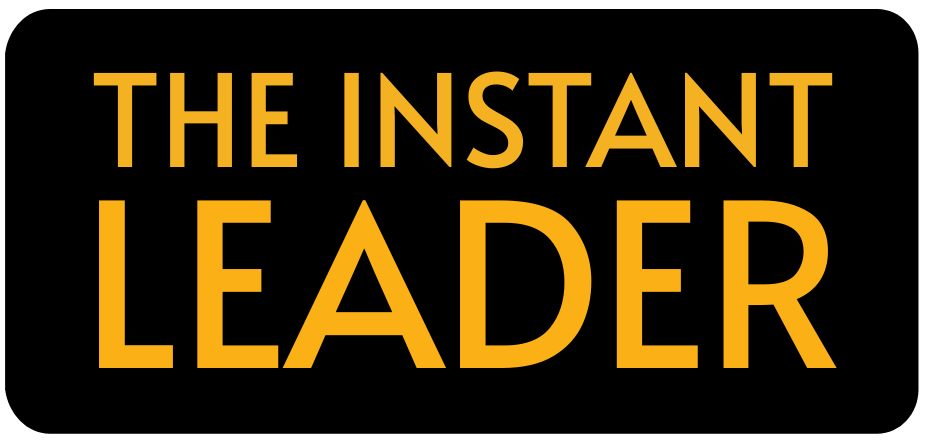Ever faced a conflict where it felt like you and the other person were speaking different languages? Of course, that's a rhetorical question. We've all been there.
A disagreement can quickly spiral out of control when we're not equipped with the tools to handle it. Emotions take over and now we're in a fight when we should be on the same team working towards a common goal.
It’s a common scenario in both personal and professional settings. But there's a sentence you can use at the beginning of a conversation that can turn a potential clash into a collaborative effort.
Let's add to your communication toolkit and, at the same time, become a more effective instant leader. Someone who can guide and inspire regardless of their title or position.
What Conflict Resolution Isn't
Many believe that conflict resolution is about winning an argument. This mindset only breeds more conflict.
One of Stephen Covey's seven habits of highly effective people, from the book of the same name, is to think win-win.
If you win an argument with your colleague, you both lose. It breeds unhealthy competition and combativeness.
If you win an argument with your boss, you both lose. Do you think the relationship is better or worse, regardless of winning?
If you win an argument with your spouse, you both lose. Marriage is where two people become one flesh. You're essentially fighting yourself when you're trying to win an argument with your spouse.
Another myth is if two people disagree, they must have fundamentally different goals. This is rarely the case.
Most conflicts arise not from different end goals, but from different approaches to the same goal.
Society often encourages us to dig in our heels and defend our stance. "Fight for what you stand for", "Don't compromise your values", or "It's important to speak up".
All that advice? It's good. It means having integrity.
The problem lies not in the intention but in the approach.
The wrong approach leads to viewing the other person as opposition rather than a potential ally.
This method is different. It emphasises clear communication of shared goals from the start.
This simple shift can turn adversaries into partners, working together in unity.
The One Question
This method assumes that at a particular level of thought, both parties want the same thing. In NLP (Neuro-linguistic programming), it's called chunking up.
This is the concept of chunking specific units of information together so that the bigger goal reveals itself. By doing so, the focus becomes less on the details and more on what exactly the details are trying to achieve.
Imagine two team members, Jane and John, working on a marketing campaign. They seem to be in constant disagreement.
- Jane's perspective: She insists on using social media ads exclusively. She believes it’s the most effective way to reach their target audience.
- John's perspective: He argues for investing more in email marketing. He’s convinced that personalised emails will generate better engagement.
At first glance, they appear to be at odds with each other. But let's apply the concept of chunking up.
- Step Back: They both step back and recognise their ultimate goal. They start by asking why they prefer their chosen methods.
- Chunk Up: They realise that both want the same bigger goal – to increase brand awareness and drive sales for the company.
By shifting their focus from the specific tactics to the shared objective:
- They see that both social media ads and email marketing aim to attract and engage customers.
- They agree that combining both methods could create a more comprehensive strategy.
Now, instead of arguing, they collaborate. Jane and John work together to create a unified campaign that uses both social media ads and email marketing, maximising their reach and engagement.
In this way, by chunking up and looking at the bigger goal, they turn their differences into a powerful combined effort.
So what's the one question already?! It's this:
"What's important to you about...X?"
Let's assume you're Jane in the example above. Here's what you would say to John "John, I just wanted to ask, what's important to you about email marketing?"
Wait for reply, and follow up with "And what's the purpose of that?".
Wait for reply, and follow up with "And what does achieving that do?"
And so on... UNTIL John says something along the lines of "to increase brand awareness and drive sales for the company", which is exactly what you want too.
Each time you ask a question similar to the above, you're chunking up, placing less emphasis on the details and specifics and eventually finding common ground from which to work.
Then you can respond with something like;
"Fantastic, that's exactly what I want as well! Since we're on the same page, can we explore the best ways to achieve that, including looking at both our ideas, as well as brainstorm others we might not have thought of?"
When you're both working at a high enough chunk level, more options open up.
It eliminates the you vs. me and turns it into a how can we situation.
The conversation opens up when you start from common ground. That's a rather obvious statement, but the tricky part is knowing how to actually do it.
Well, now you know.
Putting It Into Practice
Practice the questions. Use them when someone gives an opinion or states a strong preference for something.
Instead of directly responding to the statement, try asking "What's important to you about...X?" to move the conversation up a level. You'll be amazed at the additional insight you get.
By simply using the one question, not only can you avoid potential conflict, you're also fostering collaboration and unity. Both are qualities that enhance your leadership.
"Alone we can do so little; together we can do so much." — Helen Keller







